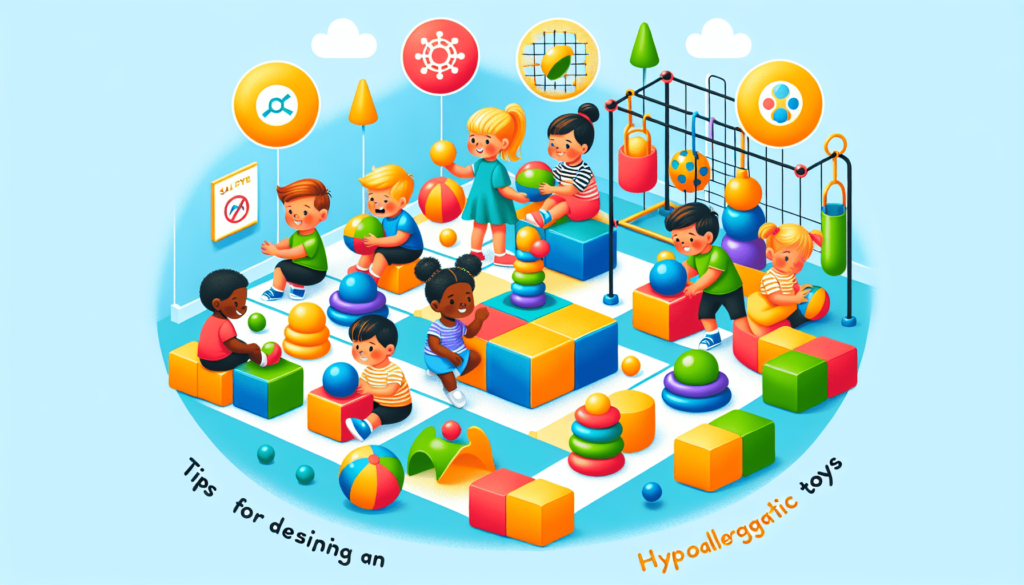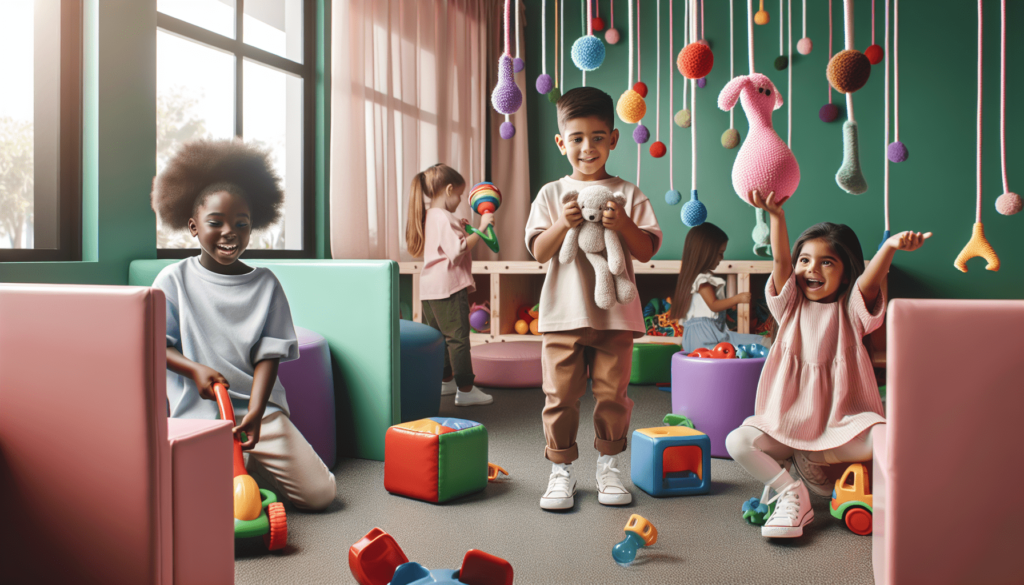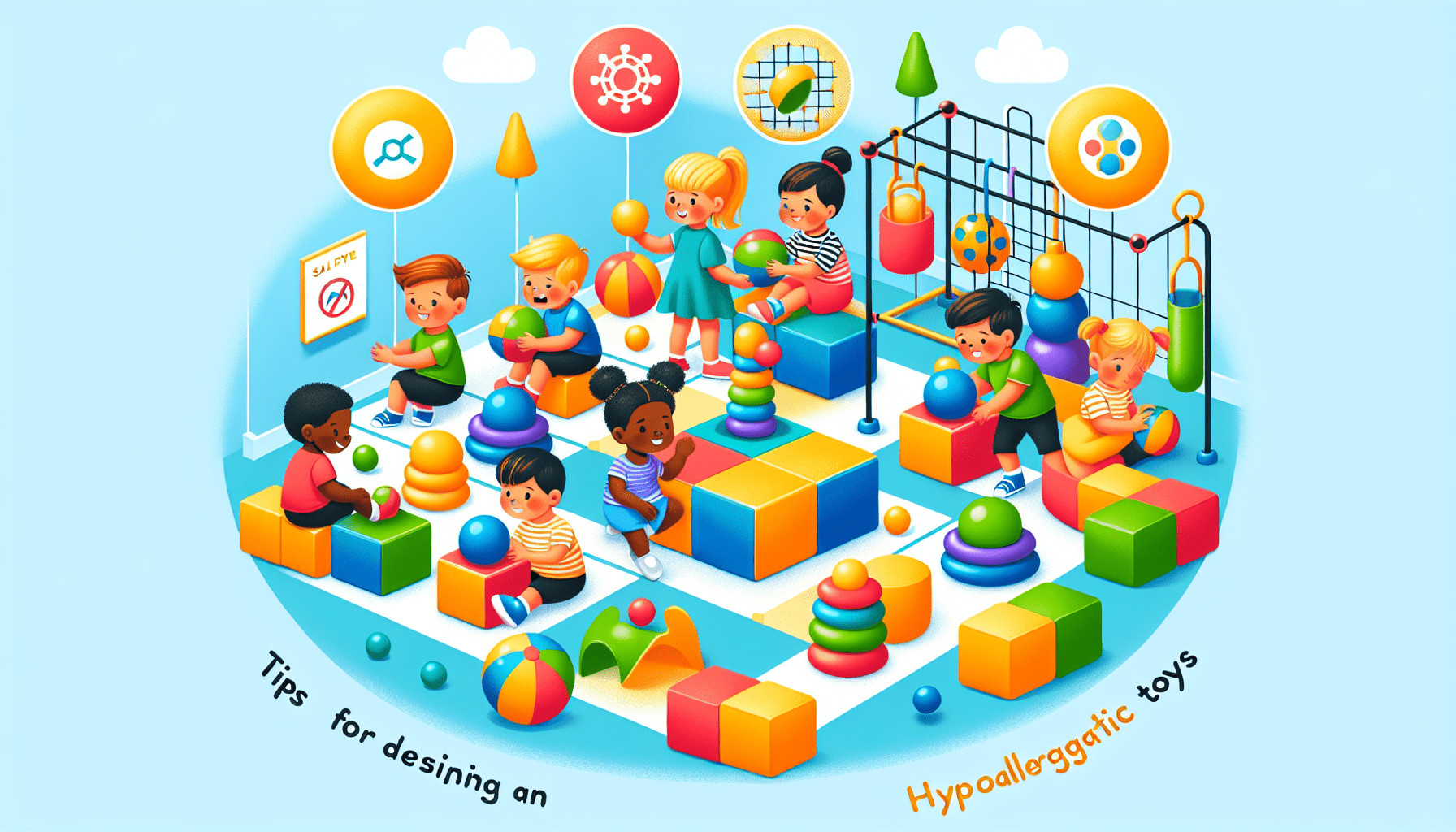Creating an allergy-safe play area for children can be a rewarding and manageable task when you know the right steps to take. By making a few thoughtful adjustments, you can transform a regular play space into a haven where kids can explore, play, and learn without the worries of common allergens. This guide provides you with essential tips and insights to help you design a secure and enjoyable play environment, ensuring the safety and happiness of all children who use it. Have you ever wondered how to create a safe, enjoyable space where children with allergies can play without you constantly worrying about potential reactions? Well, you’re in the right place. Let’s dive into some practical tips for designing an allergy-safe play area.
Understanding Allergies
Before you go about building an allergy-safe play area, it’s essential to understand what allergies are and how they can impact children. Allergies occur when the body’s immune system reacts to substances that are typically harmless, known as allergens.
Common Allergens
The most common allergens can be broken down into a few categories:
| Type of Allergen | Examples |
|---|---|
| Food | Peanuts, tree nuts, milk, eggs |
| Environmental | Pollen, dust mites, pet dander |
| Chemical | Cleaning products, fragrances |
| Insect | Bee stings, ant bites |
Symptoms of Allergies
Children can exhibit various symptoms when exposed to allergens, ranging from mild to severe:
| Symptom Type | Examples |
|---|---|
| Respiratory | Sneezing, coughing, wheezing |
| Skin | Rashes, hives, eczema |
| Digestive | Nausea, vomiting, diarrhea |
| Anaphylaxis (Severe) | Difficulty breathing, shock |
Recognizing these symptoms early can be crucial in managing allergies effectively.
Planning the Play Area
Now that you understand the basics of allergies, it’s time to move on to planning the play area. A well-designed play area can minimize the risk of allergen exposure while still providing a fun and stimulating environment.
Choosing the Right Location
The first step is to choose a location that naturally minimizes allergen exposure:
- Indoors vs. Outdoors: An indoor play area is generally easier to control for allergens than an outdoor one. However, with proper planning, you can make outdoor areas safe, too.
- Ventilation: Good ventilation reduces indoor allergen levels. Ensure that the area is equipped with adequate ventilation systems if it’s indoors.
- Sunlight: Natural light can help kill dust mites and mold spores, so a sunny location is preferable.
Floor Materials
The type of flooring you choose can make a significant difference in controlling allergens:
| Flooring Type | Pros | Cons |
|---|---|---|
| Hardwood | Easy to clean and doesn’t trap allergens. | Can be slippery; may need regular polishing. |
| Carpet | Soft and cushioning. | Traps dust, pet dander, and pollen. |
| Cork | Naturally hypoallergenic. | May be expensive; less durable. |
| Vinyl | Easy to clean, inexpensive. | Can contain chemical allergens. |
Considering these factors, hardwood or cork flooring tends to be the best choices for reducing allergen accumulation.

Design Elements
When you’re planning your allergy-safe play area, it’s crucial to consider various design elements, including furniture, toys, and safety features.
Furniture
Choosing the right furniture is a significant part of reducing allergens:
- Material: Opt for furniture made from hypoallergenic materials like metal, plastic, or untreated wood.
- Coverings: Use washable fabrics for cushions and covers.
- Placement: Keep furniture away from windows and vents to reduce exposure to pollen and dust.
Toys and Play Equipment
Not all toys are created equal when it comes to allergies. Aim for allergy-friendly toys:
| Toy Type | Recommendations |
|---|---|
| Plush Toys | Opt for washable or hypoallergenic varieties. |
| Plastic Toys | Go for BPA-free and non-toxic options. |
| Wooden Toys | Choose untreated or certified-safe wooden toys. |
| Art Supplies | Use non-toxic, hypoallergenic options. |
Cleaning and Maintenance
Keeping the play area clean is crucial to maintaining an allergy-free environment. Here are some tips:
- Regular Cleaning: Clean surfaces and toys regularly using hypoallergenic cleaning solutions.
- Vacuuming: Use a vacuum with a HEPA filter to keep dust and allergens at bay.
- Air Purifiers: Consider adding air purifiers to your play area to reduce airborne allergens.
Food Safety
Food allergies can be particularly severe, so it’s essential to have a strategy for food in your play area.
Snack Management
Create rules for snack times to minimize food allergen risks:
- Designated Areas: Have a specific area for eating, and keep it separate from the main play area.
- Food Restrictions: Limit or exclude common allergens like peanuts and dairy from snack options.
- Labeling: Clearly label any food brought into the play area to avoid accidental exposure.
Allergy Action Plan
Having an allergy action plan is essential for managing food allergies effectively. Here’s what you should include:
| Step | Details |
|---|---|
| Emergency Contacts | Keep a list of emergency contacts easily accessible. |
| Medication | Store necessary medications (like EpiPens) in a clearly marked area. |
| Symptoms | Document common symptoms of allergic reactions for quick reference. |
| Actions to Take | Include step-by-step actions for mild to severe reactions. |

Communication
Clear communication ensures everyone, including parents, caregivers, and even the children, understands the allergy policies and procedures.
Educating Caregivers
All caregivers should be adequately informed about the potential allergens and the steps to take in case of exposure:
- Training Sessions: Organize training sessions on recognizing and handling allergic reactions.
- Instruction Manuals: Provide written instructions for dealing with allergens and emergencies.
Informing Parents
Maintain open communication with parents to ensure they’re comfortable with the play area:
- Allergy Plans: Share your allergy action plan with parents.
- Regular Updates: Provide regular updates on any changes or incidents involving allergen exposure.
Engaging the Children
Educate the children about allergies in a simple, understandable way:
- Storytelling: Use stories or books about allergies to teach kids.
- Interactive Games: Create games that explain the importance of avoiding certain foods or actions.
Regular Inspections and Updating
An allergy-safe play area isn’t a set-it-and-forget-it kind of project. Regular inspections and updates ensure continued safety.
Regular Inspections
Make it a habit to inspect the play area:
- Daily Checks: Perform daily checks for any visible signs of allergens.
- Monthly Deep Cleaning: Conduct thorough cleaning jobs monthly, including washing toys and cleaning air ducts.
- Annual Reviews: Assess the effectiveness of your allergy-safe measures annually and make improvements as necessary.
Updating Policies and Environment
Stay updated with the latest guidelines and recommendations:
- Research: Keep up with new allergen control methods and implement them.
- Feedback Loop: Regularly ask for feedback from parents and caregivers to identify any overlooked areas.
Additional Precautions
There are various additional precautions you can take to ensure your play area is as safe as possible.
Pet-Free Zones
If pets are part of the household or facility, ensure they have separate living and play areas. Pet dander can be a significant allergen, and keeping pets out of the play area can substantially reduce the risk of an allergic reaction.
Humidity Control
Dust mites and mold thrive in high humidity. Keep the humidity levels in your play area between 30-50% to minimize these allergens. Dehumidifiers can be beneficial in maintaining these levels.
Pest Control
Insects can trigger allergies either through bites or by contaminating the area. Regular pest control treatments can help ensure your play area remains free of these unwelcome guests.
Conclusion
Designing an allergy-safe play area requires thoughtful planning, ongoing maintenance, and open communication. By understanding allergens, maintaining a clean environment, ensuring food safety, educating everyone involved, and committing to regular inspections, you can create a play space where children can learn, laugh, and play without the constant worry of allergic reactions. Remember, the goal is not just to create a play area but to build a safe haven where children can thrive.
Feel free to revisit these tips and update your strategies as new information and techniques become available. Creating an allergy-safe play area is a continuous process, but it’s an incredibly rewarding endeavor, offering peace of mind to you and a fun, safe environment for the children.
